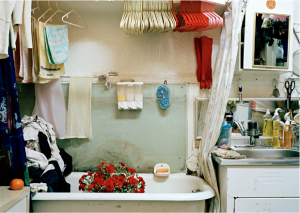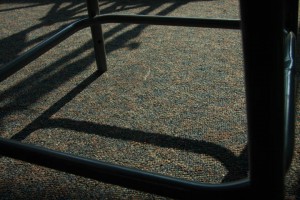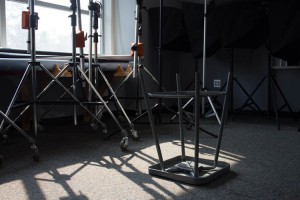
Thomas Holton is graduated from the School of Visual Art, and got the master in MFA photography, video, and related media. One of his famous photography works is called “The Lams of Ludlow Street”. In this photography work, Thomas Holton used his camera to record the life of one Chinese family who live in the neighborhood of New York City’s Chinatown. The idea of Thomas Holton shooting these photos is that he wants to show the real life of Chinese immigrants and Chinese culture to people, so they gain a deep understanding of Chinese immigrant’s daily life in the today.
Based on the photo that I choose from Thomas Holton’s “The Lams of Ludlow Street”, I can realize some composition tips that he used in this photo. At first, Thomas utilizes the composition tips of ‘Rule of Third’ to place the positions of the red carnation, clothes hangers especially red clothes hanger, and red rubber gloves to make a connection between wall and ground. Secondly, I think Thomas Holton also uses ‘Figure to Ground’ through the color of the carnation, rubber gloves, and clothes hangers which is red to create a contrast with white wall, clothes hangers, and the bathtub. It makes me feel isolated and helplessness, which is similar to the condition of Chinese immigrants because of cultural diversity and language communication barrier. At last, Thomas Holton uses symmetry in this photo; for instance, the line of blue sponge mat and the soap holder is like the symmetric vertical axis. The subjects of the left side of this axis are towels and clothes, and the objects of right side of the axis are some plastic and metal bottles and jars. In addition the crack of wall also creates a symmetric horizontal axis, so the white and red clothes hangers are like the inverted reflection of the red carnation and bathtub.
http://www.thomasholton.com/






